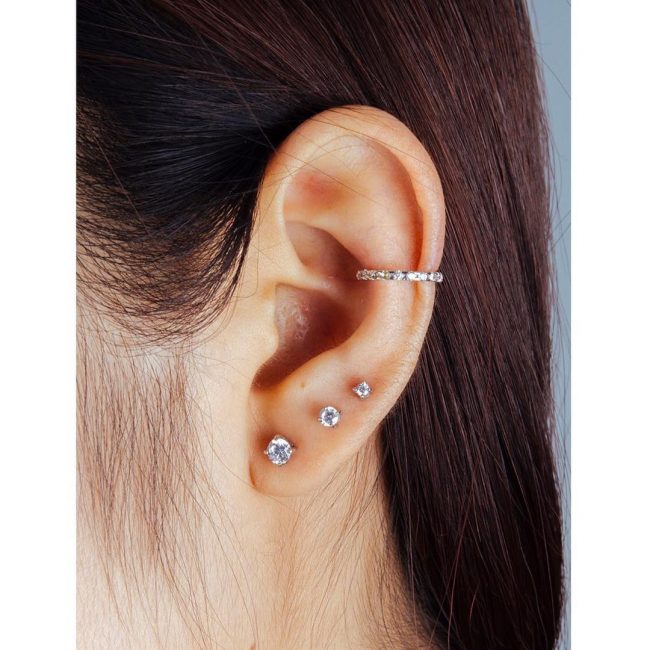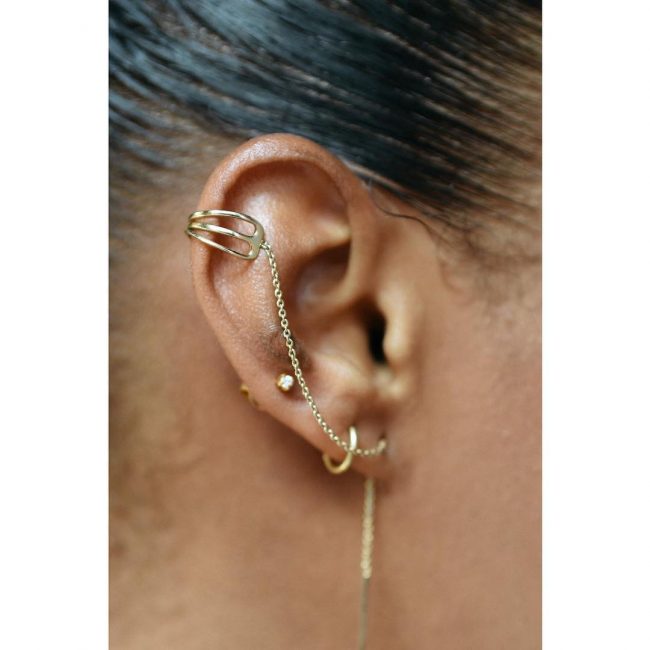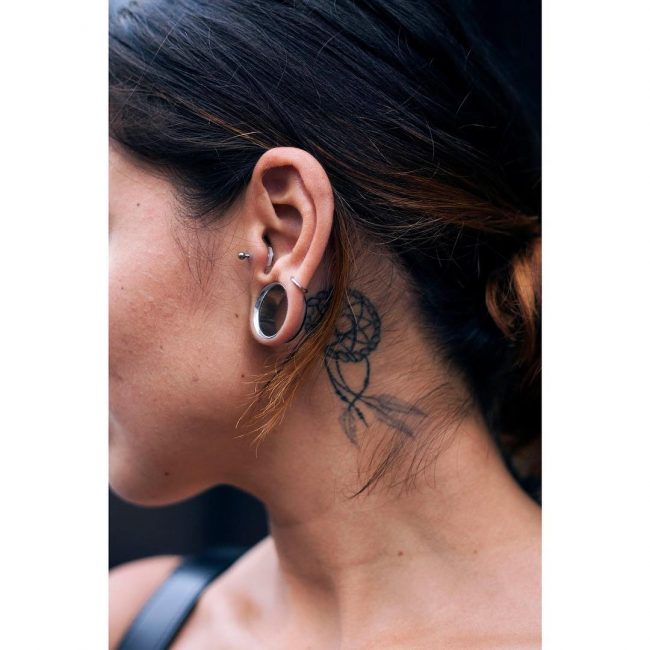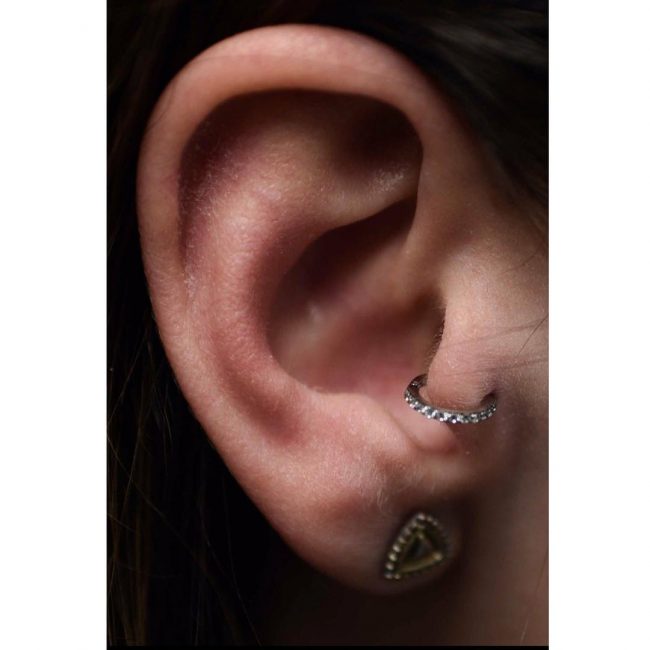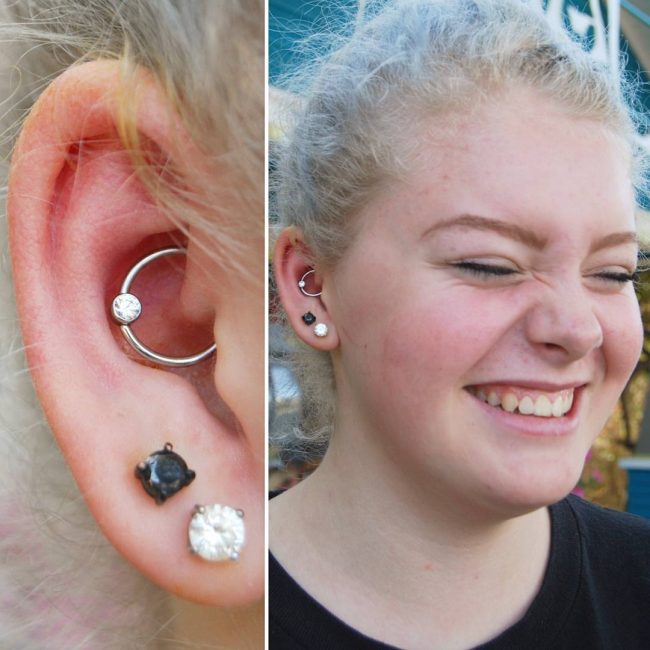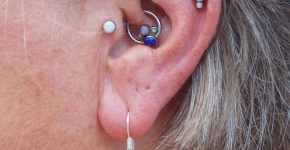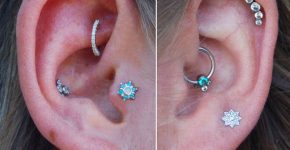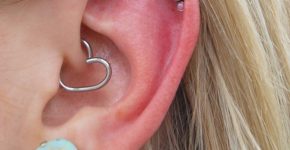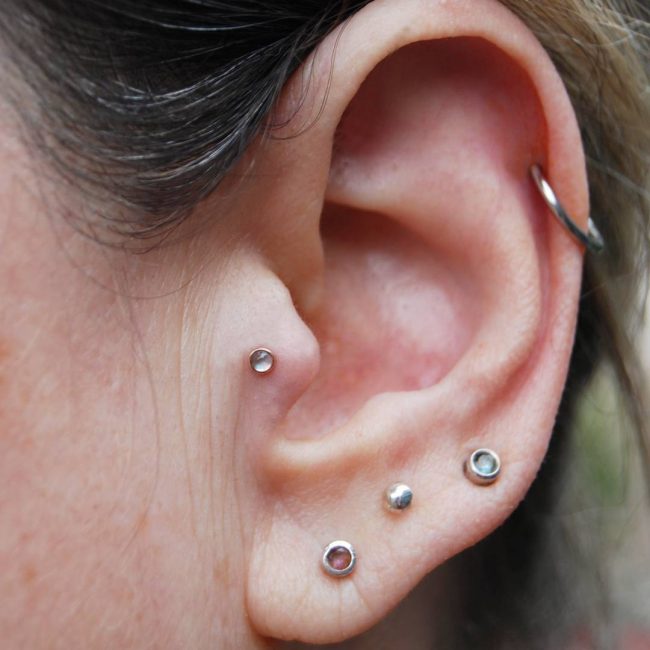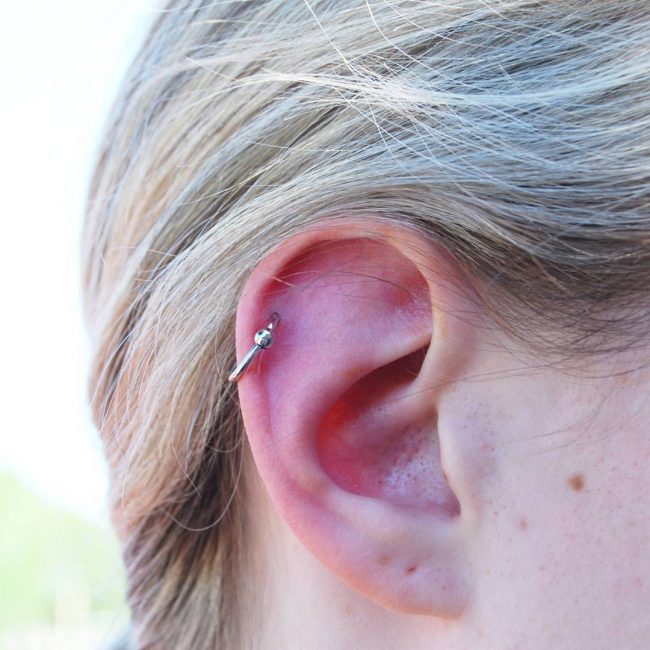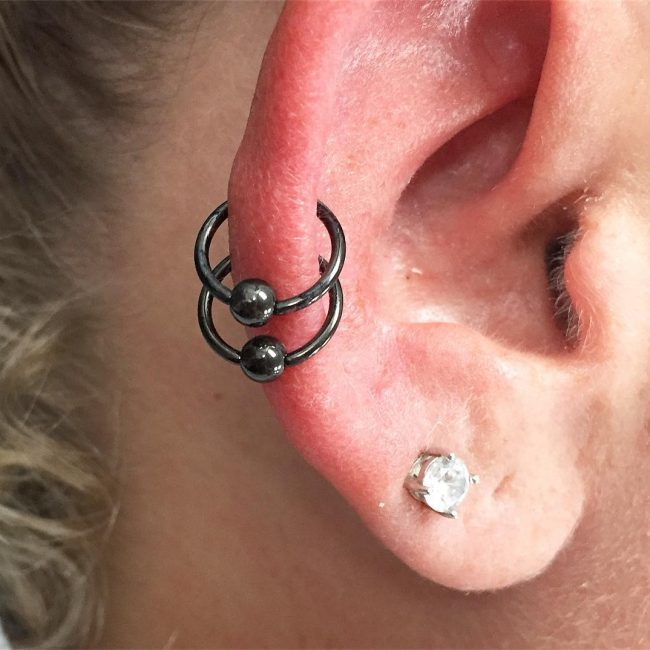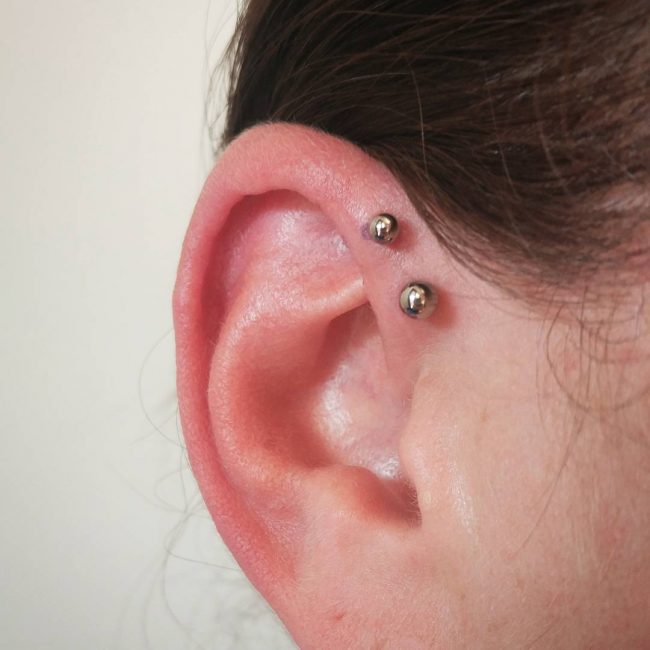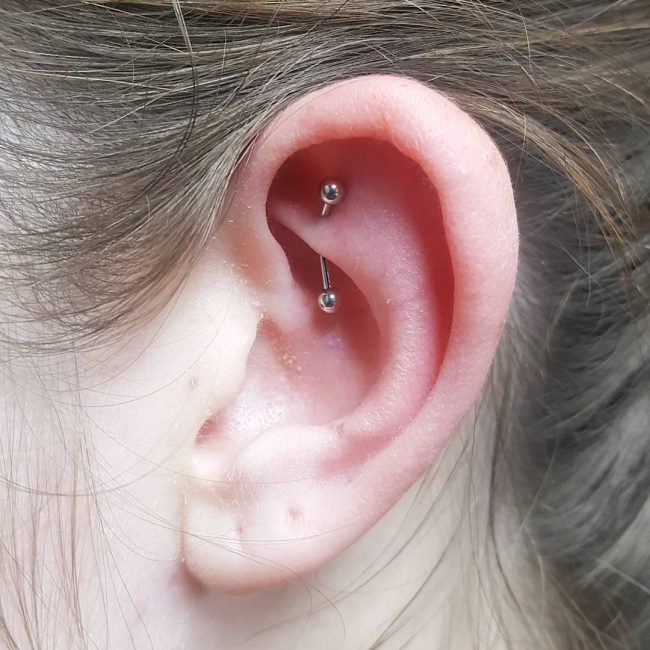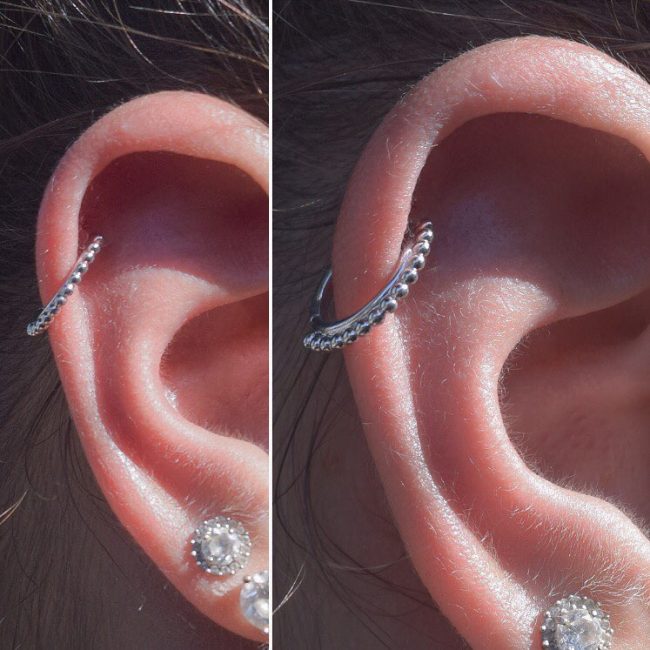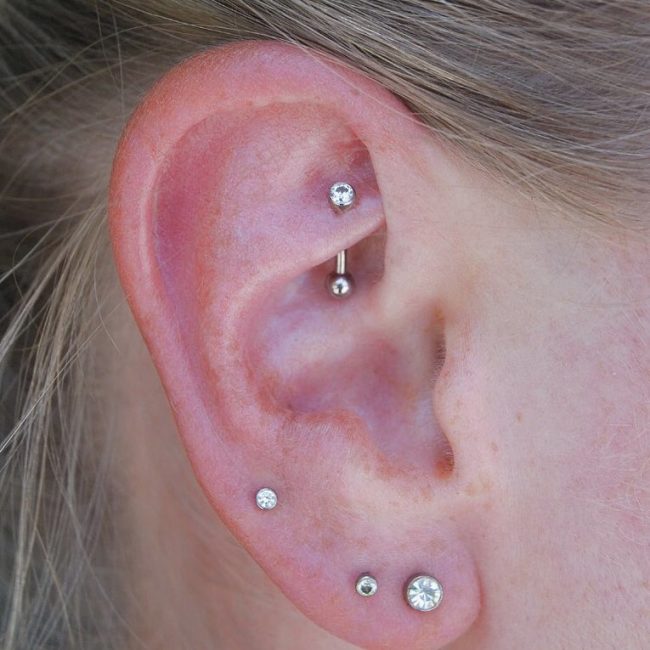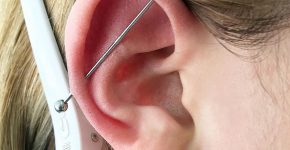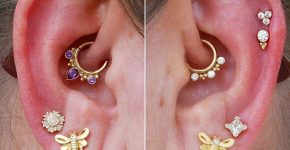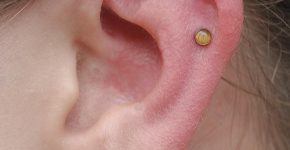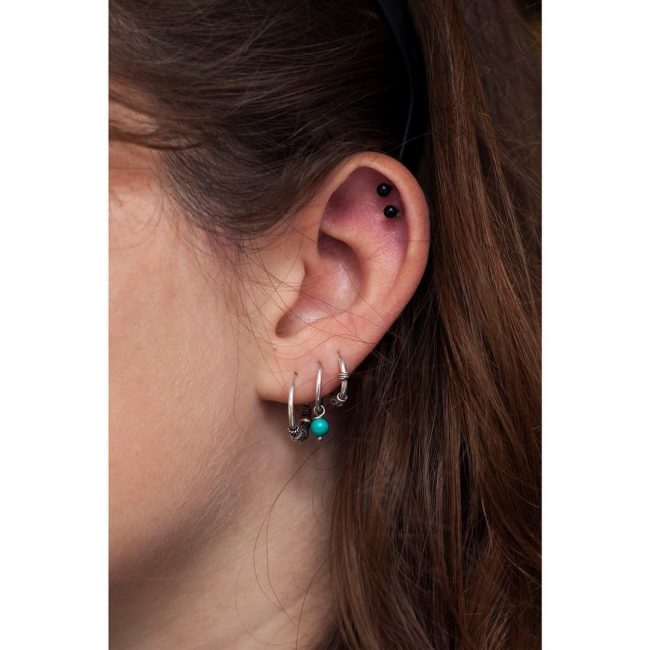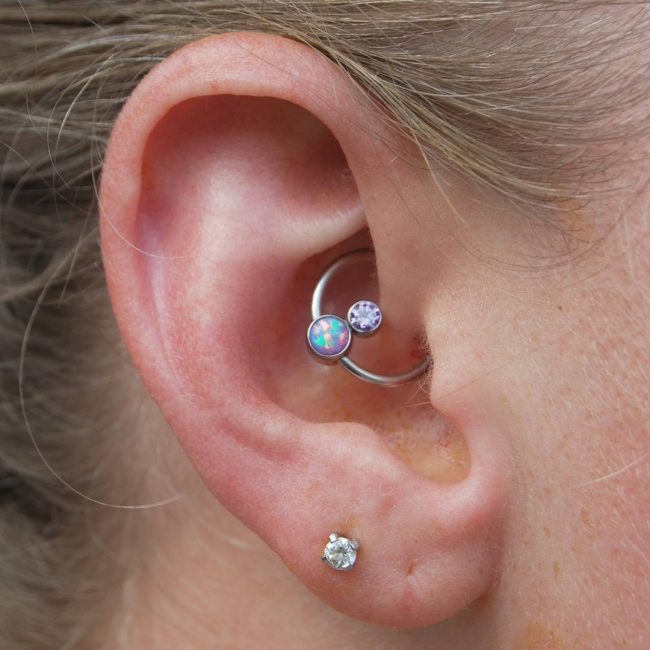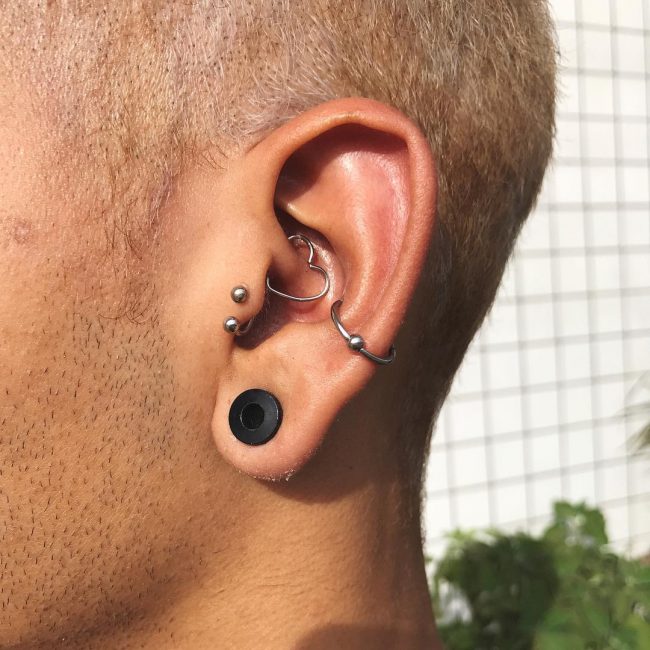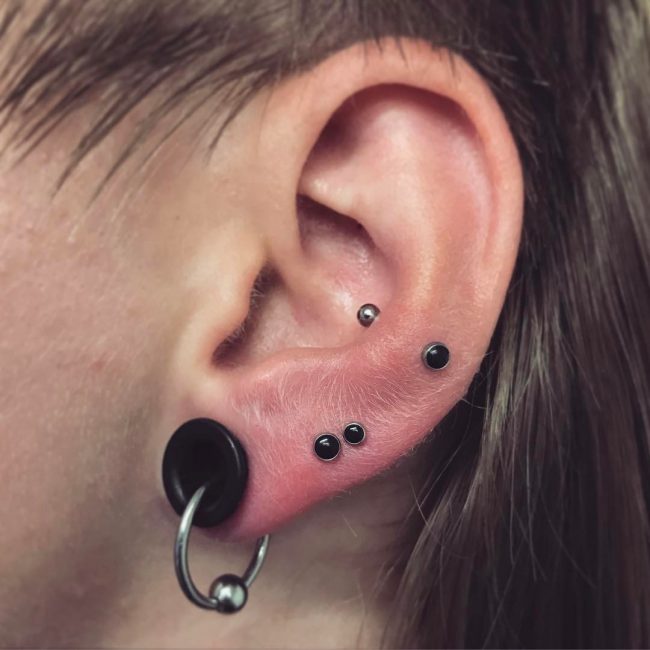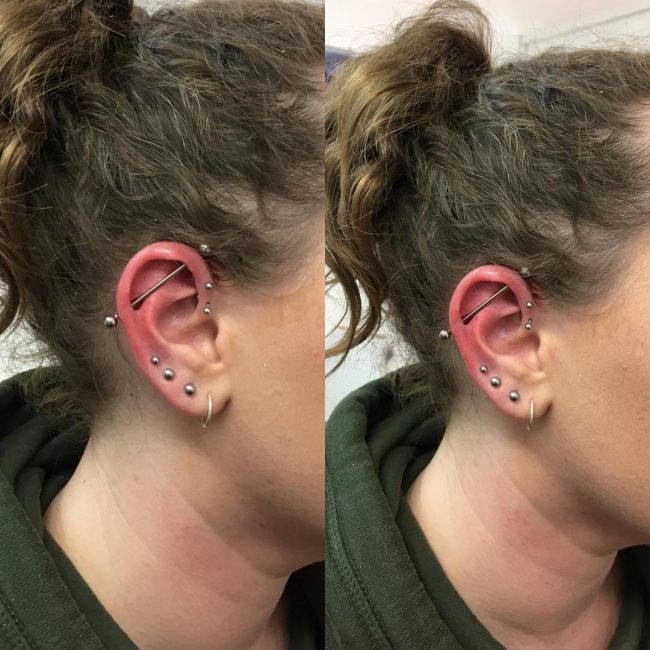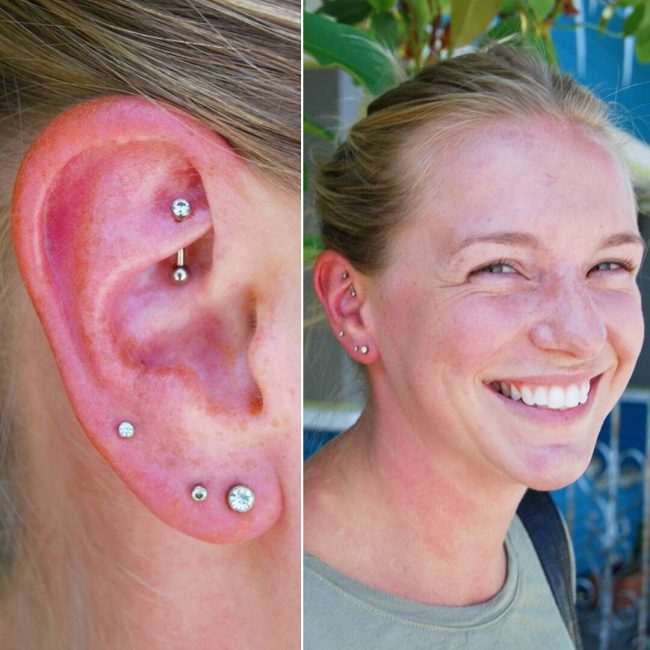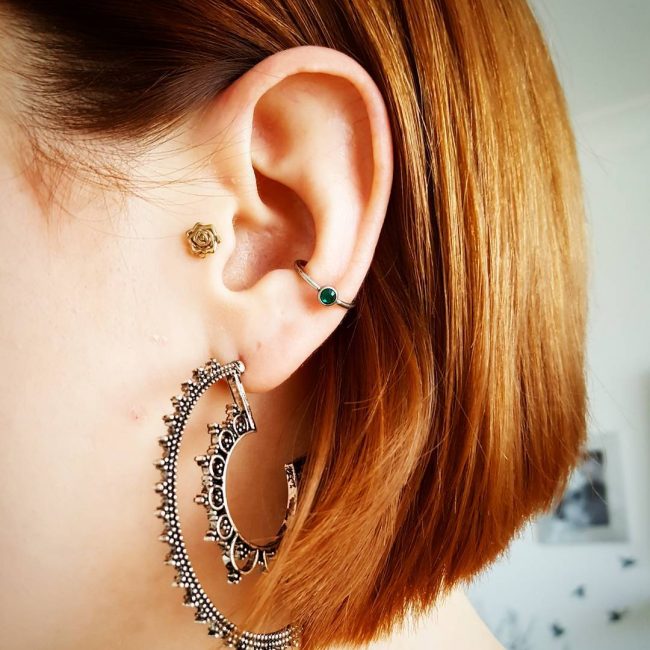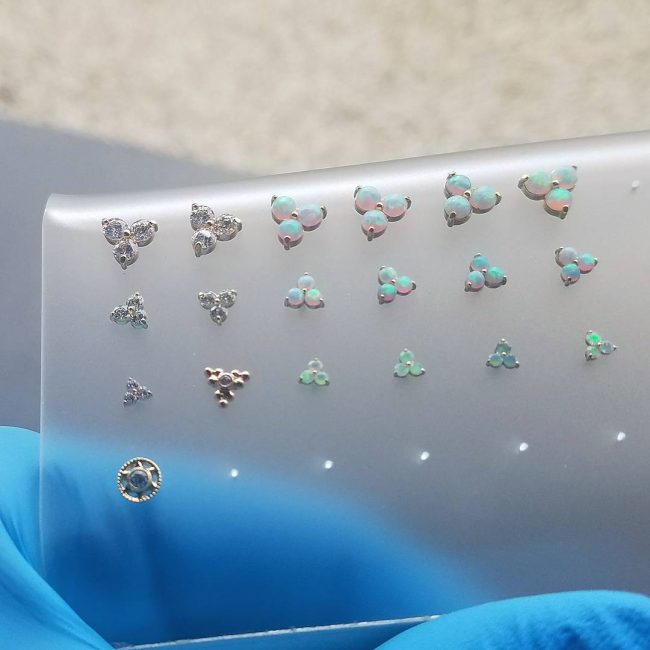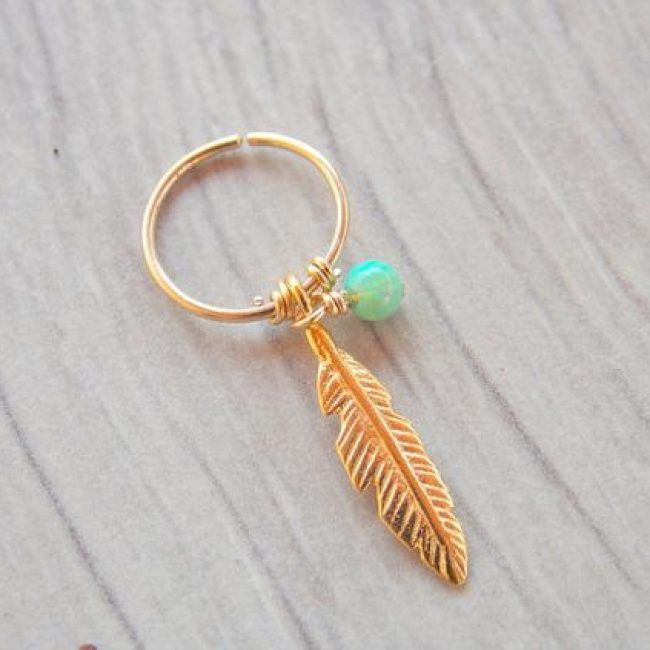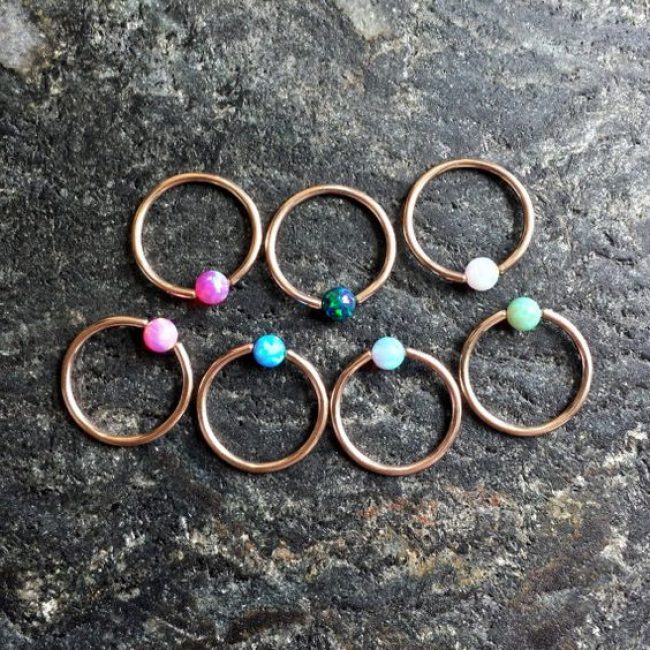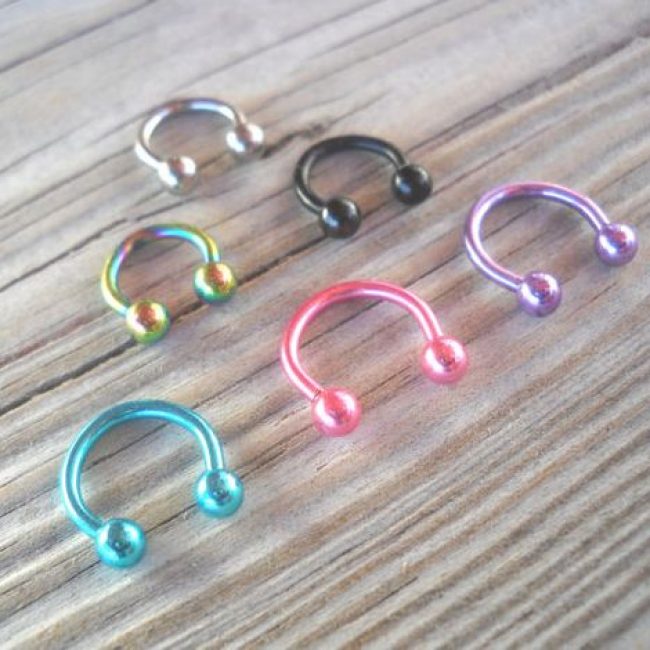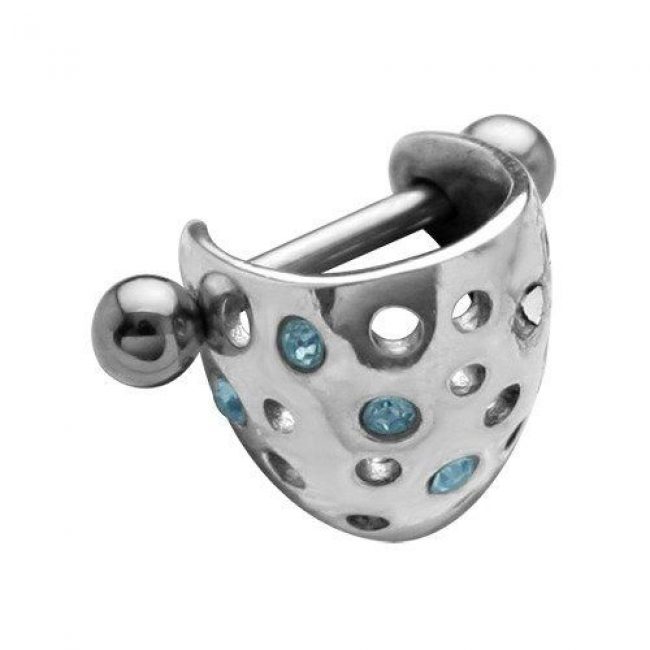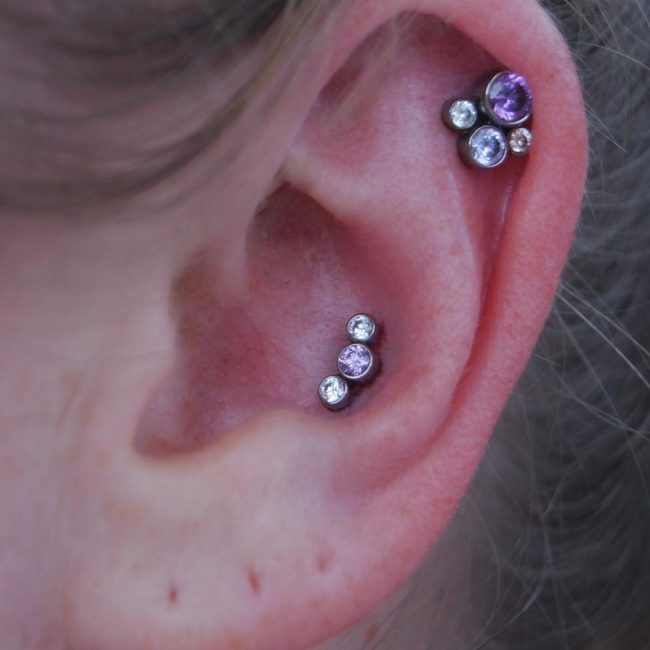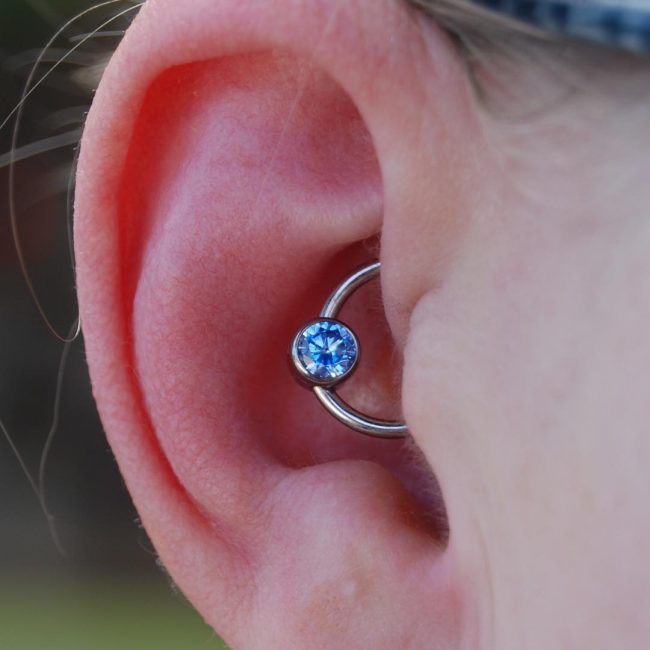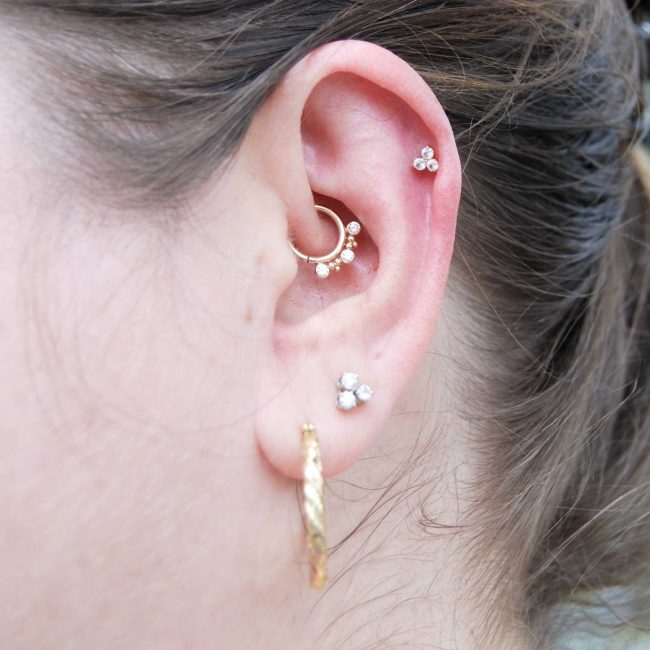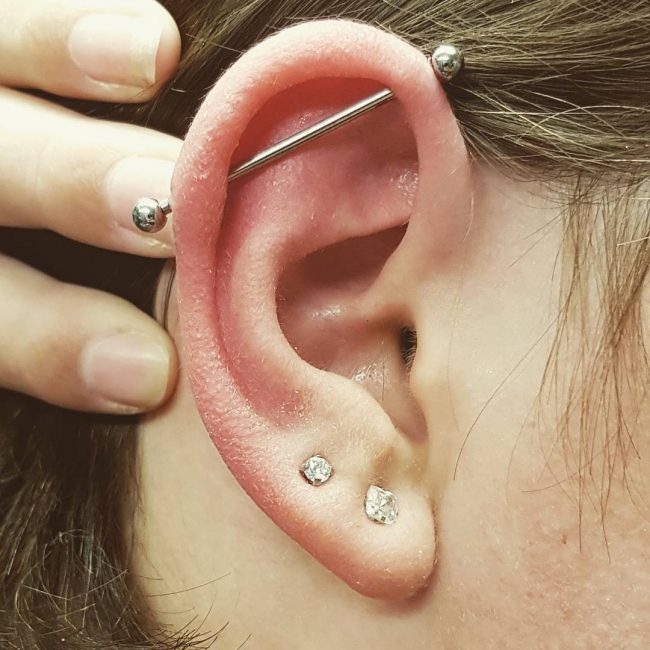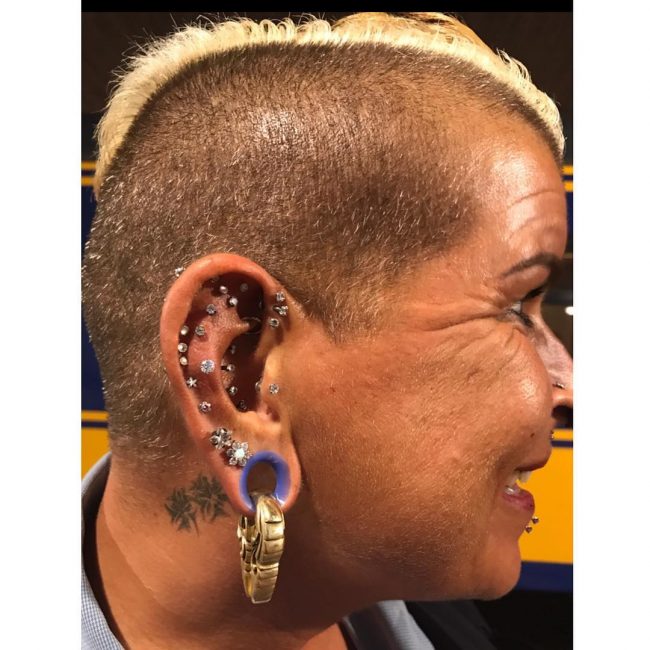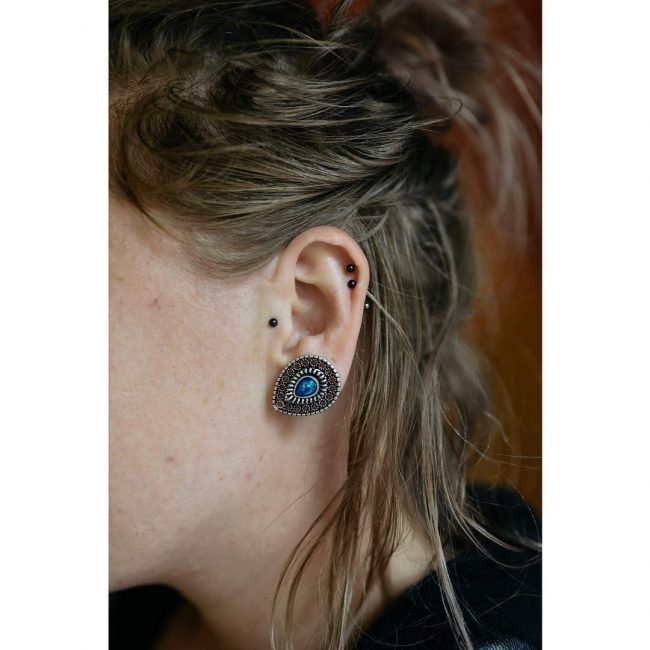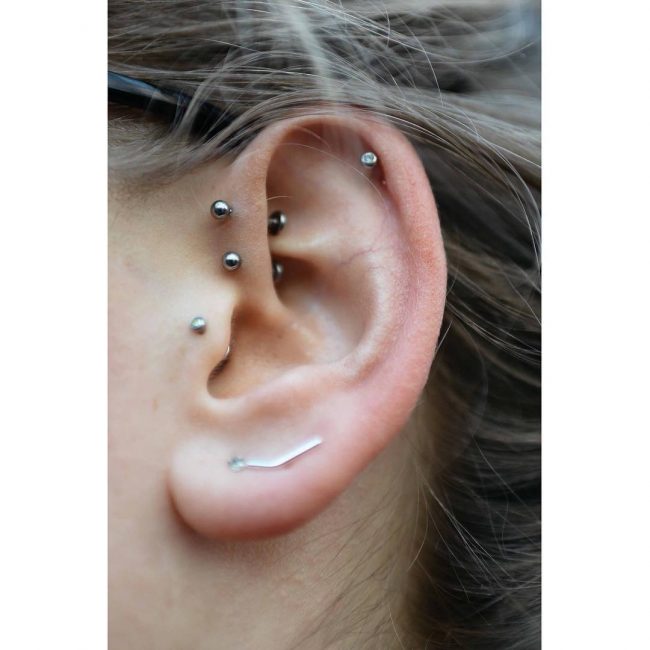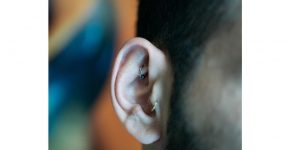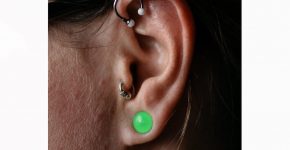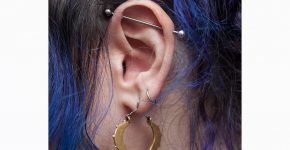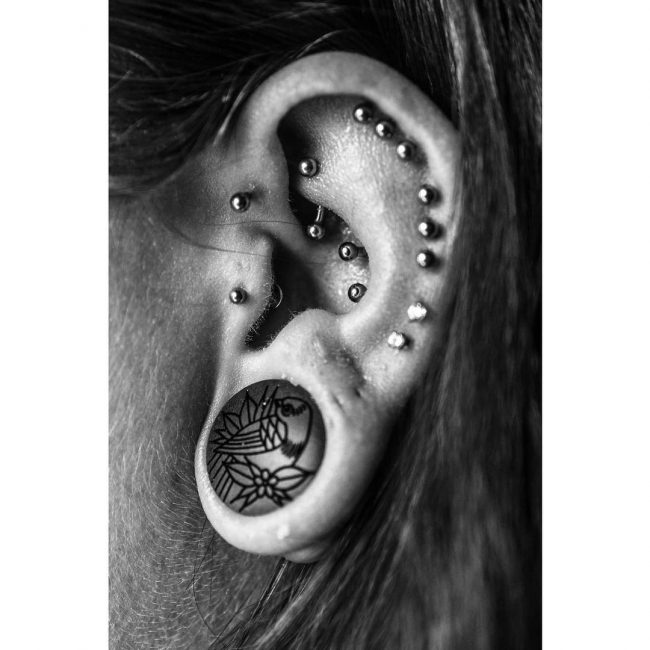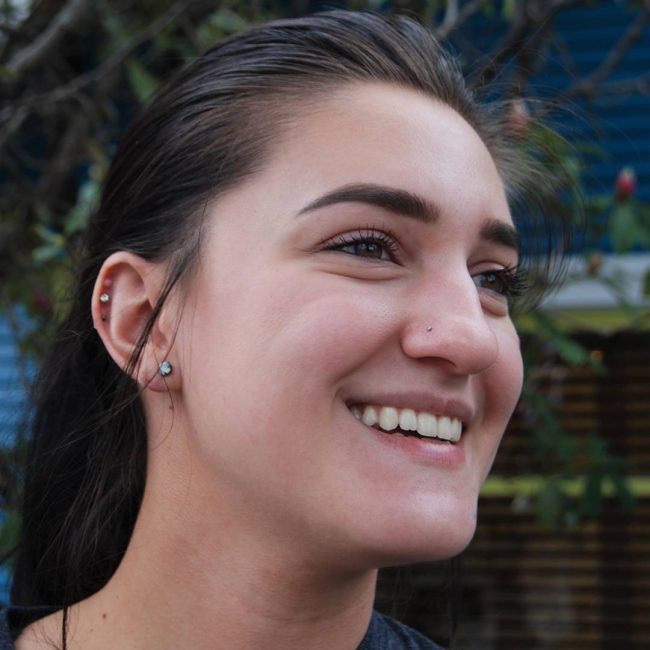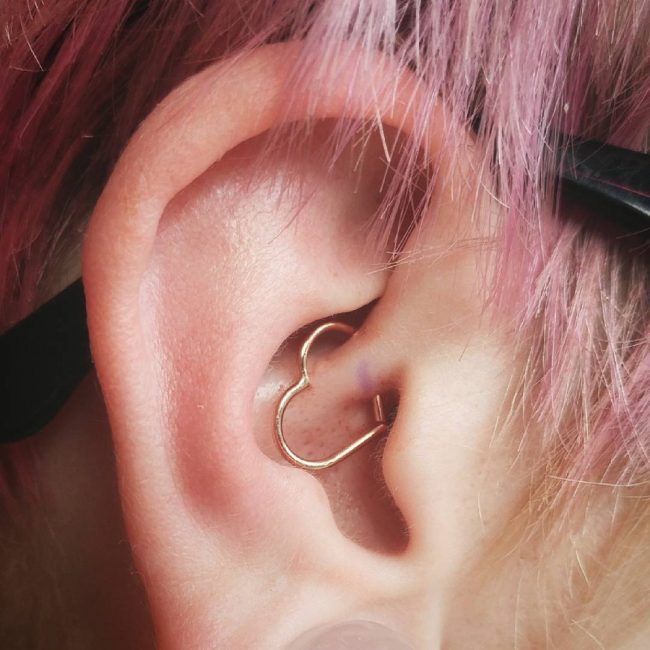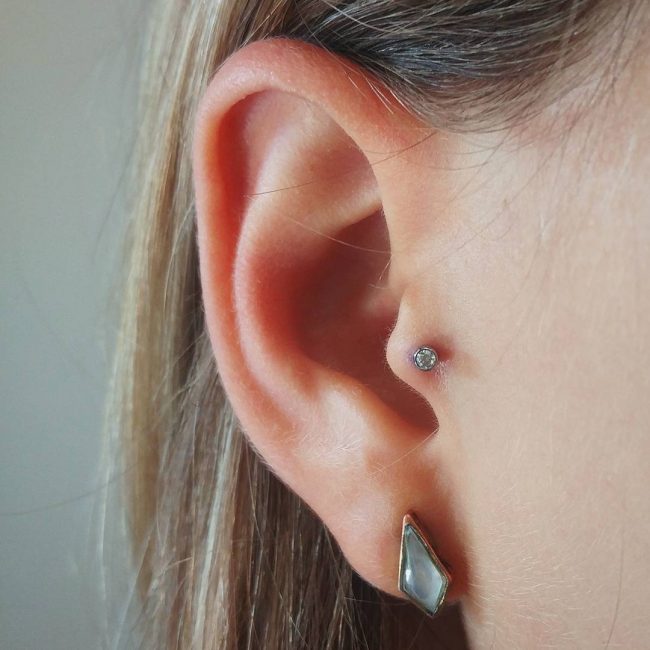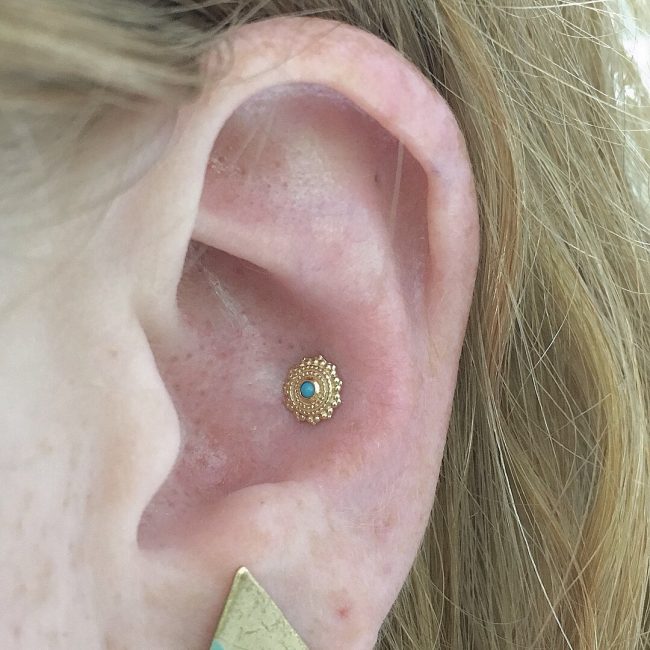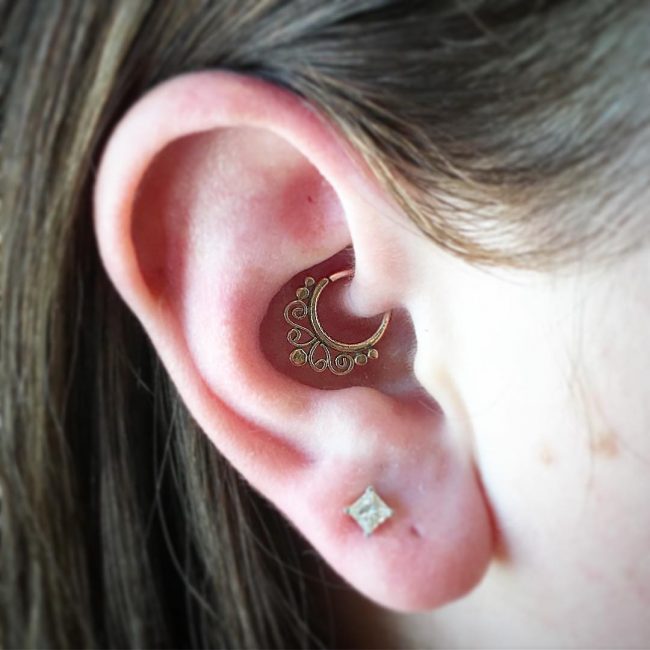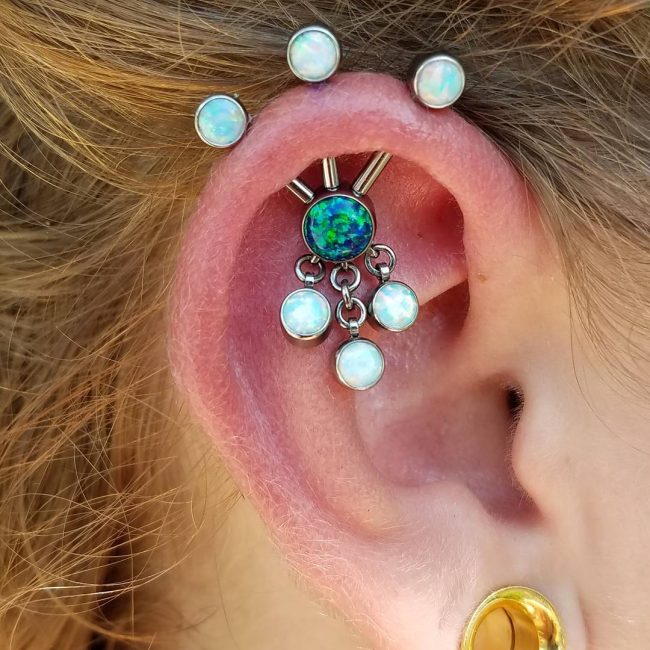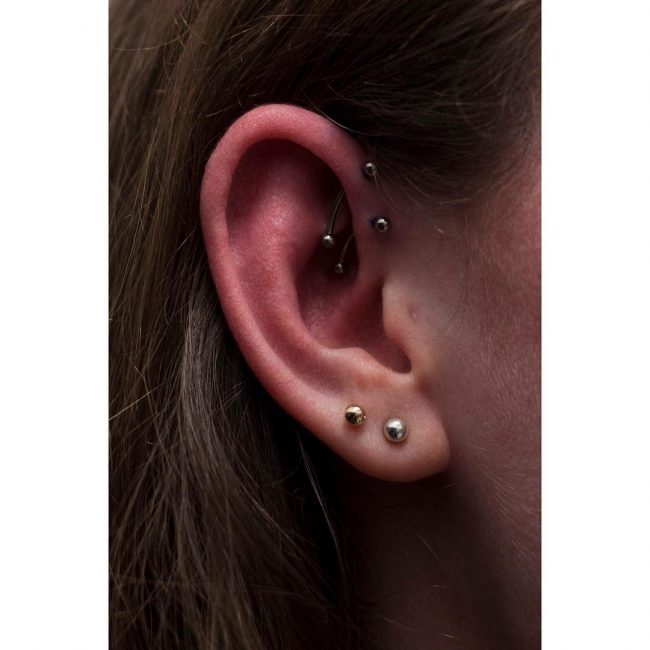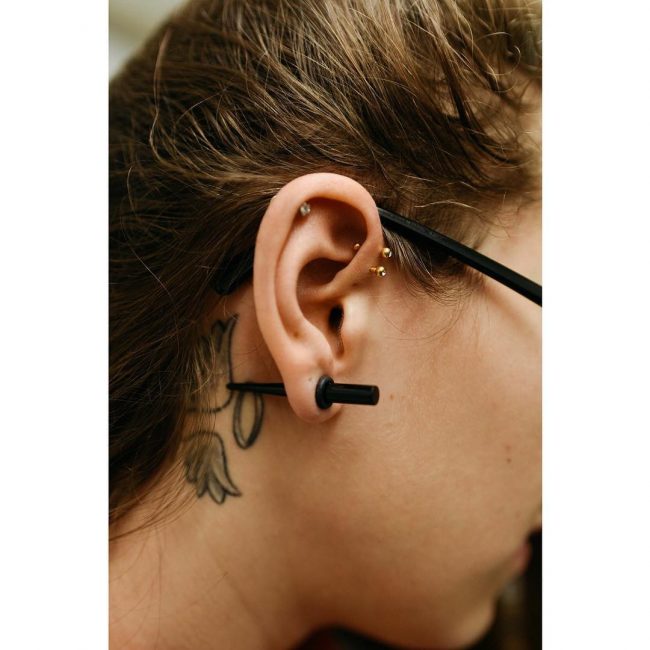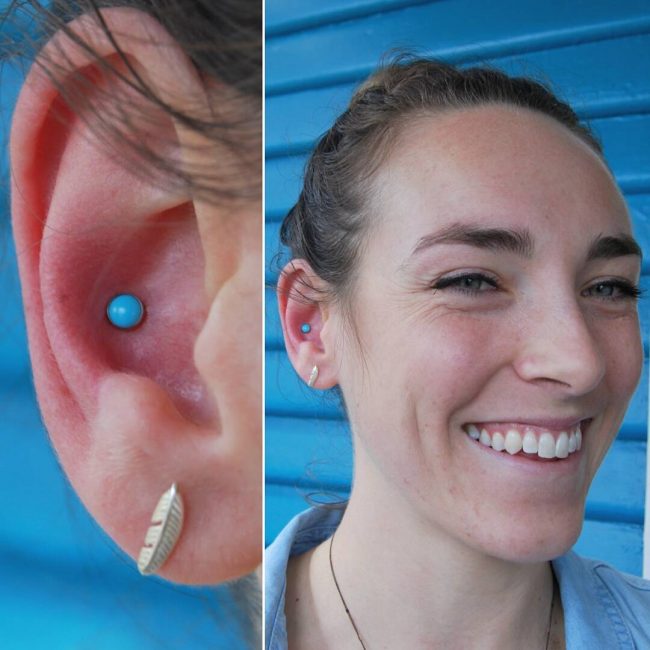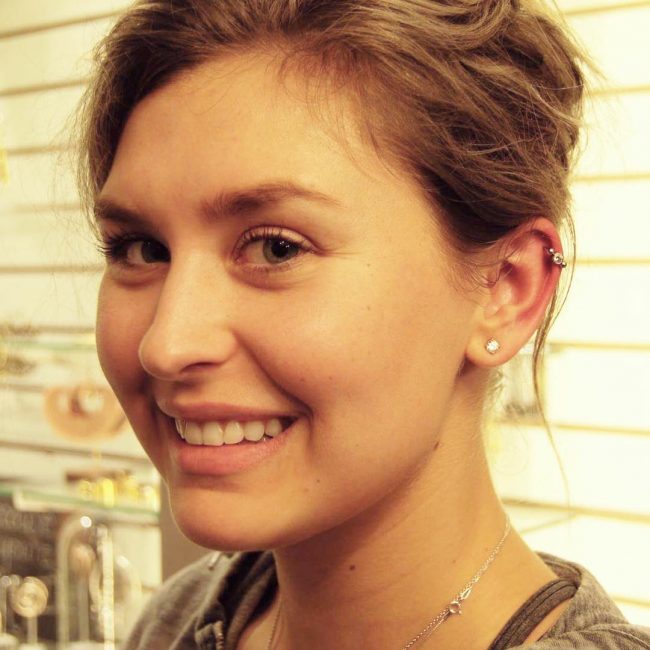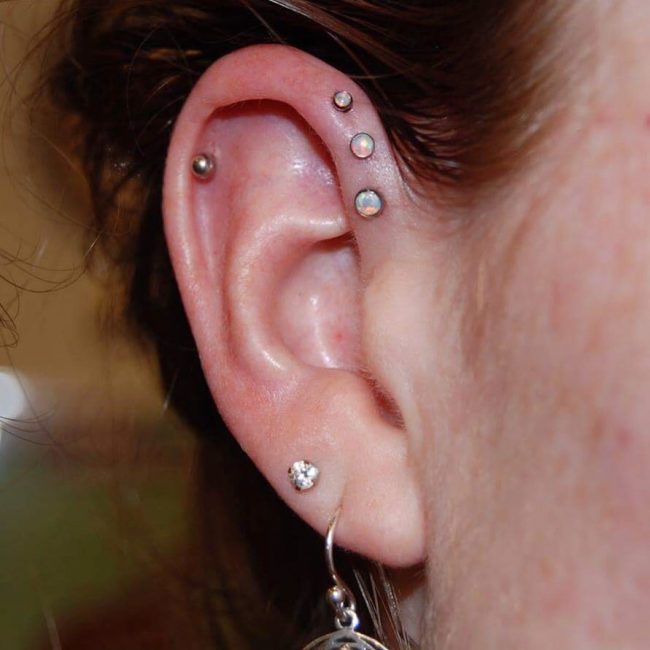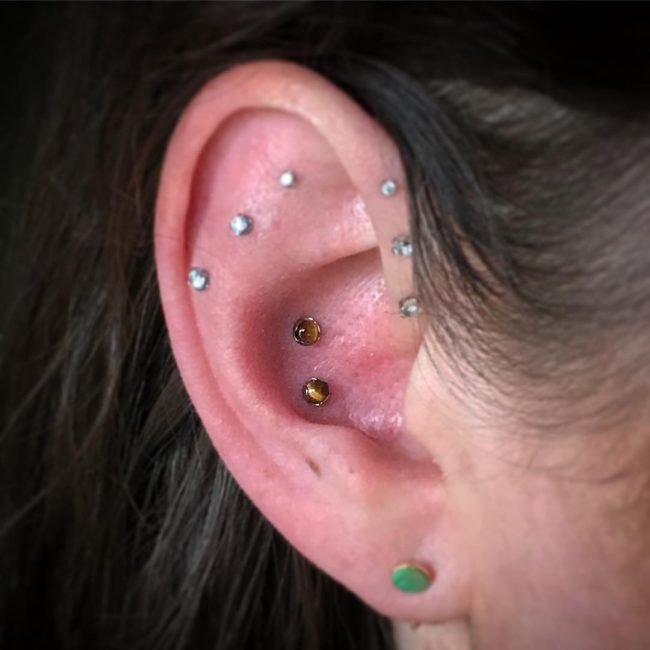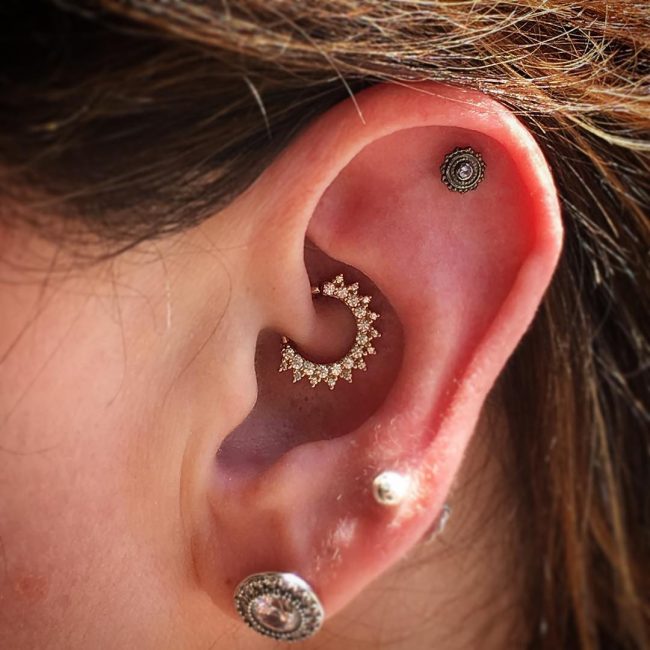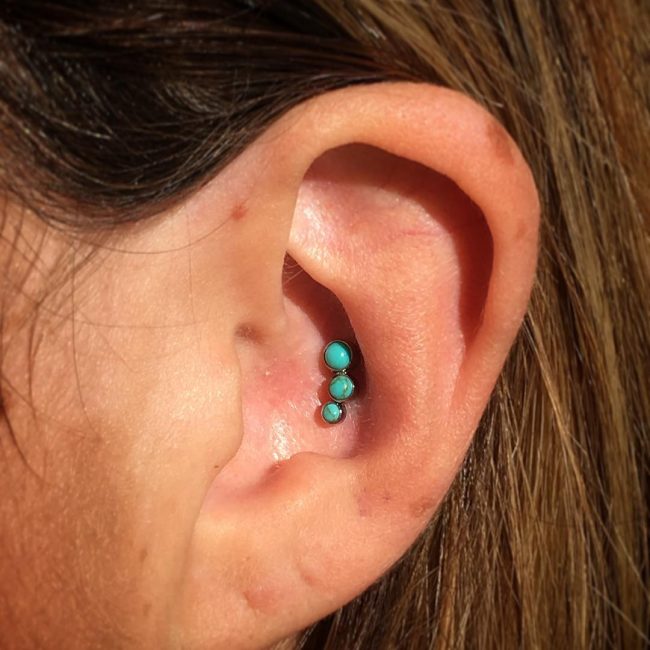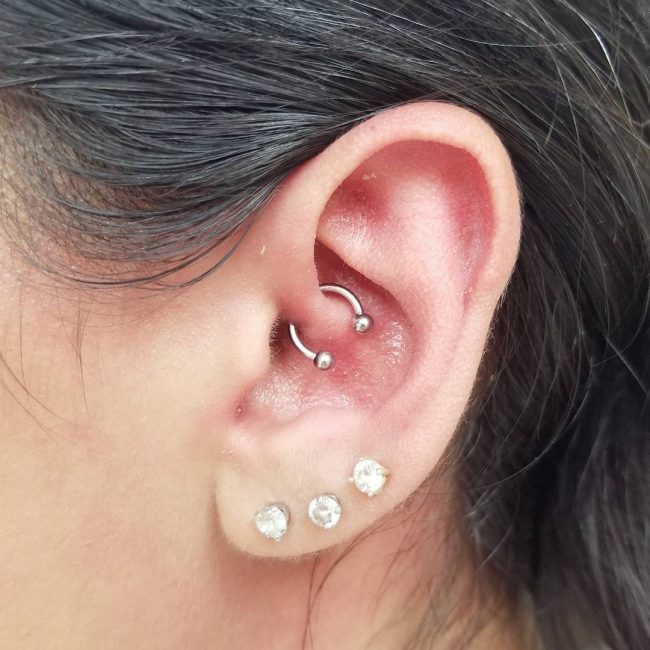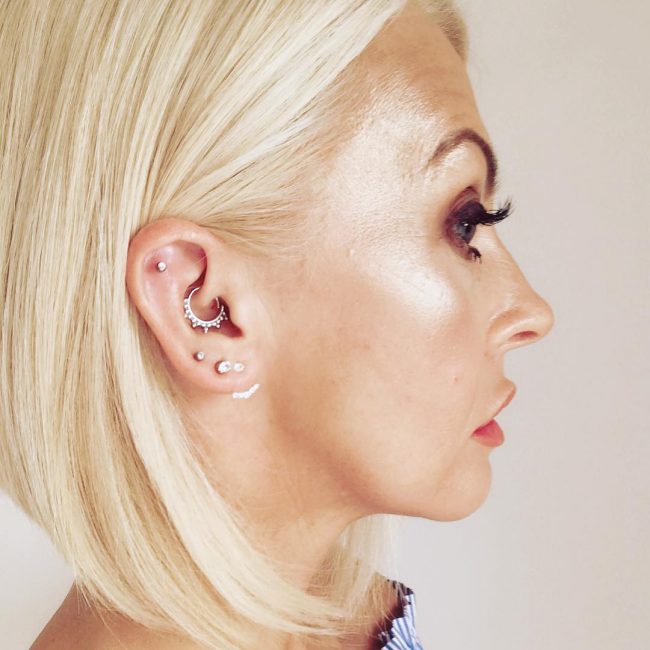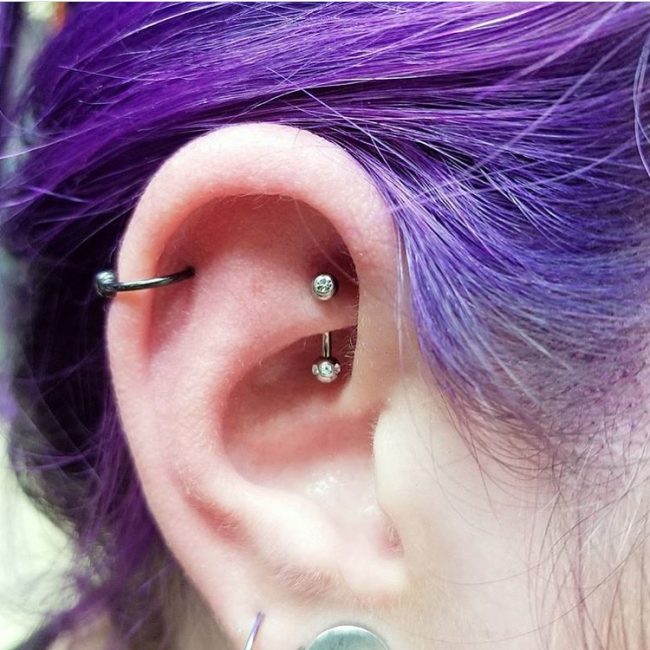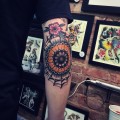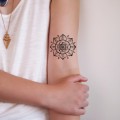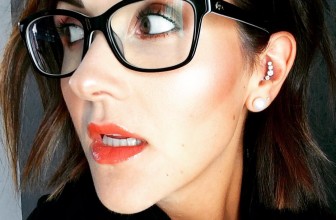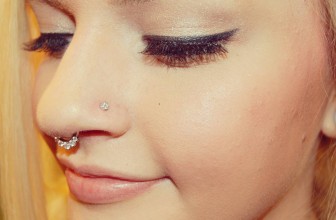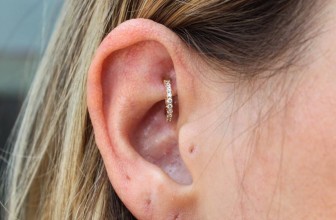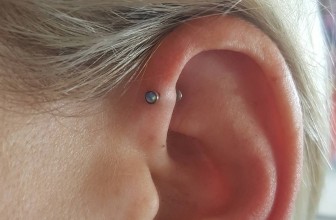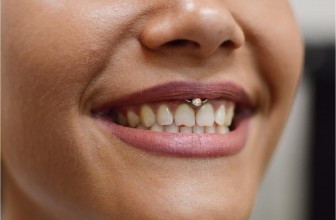The Edgy Cartilage Piercing – 60 Best Ideas & Rules
The cartilage piercings became popular back in the 90’s, and since then their popularity has been on a steady rise. This piercing style cuts across both genders, and although men still do not get them as much as women, most now accept them as a contemporary form of body art.
Most people love them because they not only stand out but also have a sexy and edgy look. Also, they are quite versatile since there are many types of piercing and jewelry that you can get.
Although these piercings will take quite a long time to heal they are not as painful as most people would expect. However, like most other forms of body art, there is a lot of misconception out there, but most of these notions are due to lack of information. And so if you are contemplating about getting one or more of these beautiful piercings, there are some crucial things that you should know to avoid being misled by misconceptions.
Contents:
- Source
- Source
- Source
What is Cartilage Piercing?
If you only have the “usual” earlobe piercing or do not have any at all the chances are that you do not know about cartilage piercing. You might also have heard or read about it but still do not understand what it is all about. It is crucial to know what it is all about so that you can be sure of what you will be getting into and what to expect.
So what exactly is a cartilage piercing? The cartilage is a flexible tissue that you can find in different parts of the body, but the one on the nose and ears is the most recognizable. And so piercing the cartilage will entail piercing a hole that is suitable for inserting jewelry. Despite the fact that you can get cartilage on different parts of the body the ears and nose are the two most common places that people pierce.
Overall the ear cartilage is what most people prefer to pierce, and so there are several types of piercings that you can get. But, for most types, the process of puncturing the hole will be the same.
back to menu ↑How It Is Done
Apart from knowing what this piercing is all about it is also important to know how the piercers do it. When it comes to getting any piercing type, there are two options to choose from which are buying an ear piercing kit online or using the services of a professional piercer.
The first choice always looks more convenient for most people, but it is not always a good idea. It is a fact that some ladies and men are good at piercing themselves. But for most others, it does not always end well since piercing the cartilage is quite challenging and so you can end up with a hole in the wrong place or with a nasty infection.
A professional piercer has the skills, experience and the necessary tools to pierce the cartilage anywhere you want, and so this is always the best option.
When you get to the office or studio, the first step is always to choose the piercing type you want since there are close to a dozen different ones you can have on the cartilage. Most professional piercers will show you images of the different spots that you can have the hole to make it easy for you to choose.
Once you make your choice, the piercer will clean the entire ear to kill germs to prevent infections. After this, the next and most important step will be the actual piercing. Although it is possible to use the piercing gun, experts do not recommend it because it makes it hard to make the hole at the exact place you want it. Also, a gun piercing on the cartilage will take longer to heal. And so you should ask your piercer to use a sterile needle instead.
It is also important to make sure the piercer wears gloves and that the environment and any other equipment are safe and hygienic. After the piercing, the piercer will always insert the ring immediately. Also, do not leave the studio or shop without aftercare and healing advice and instructions and this is more so if you are getting your first piercing on the cartilage.
- Source
- Source
- Source
Types of Cartilage Piercing
You can have several piercings on the ear cartilage, but it is important to know that the piercings will differ according to the exact spot where you have them. Knowing their different names and location is important as it will ensure you know what to ask for and have an idea of how it will look like on you beforehand. Here are some examples of the cartilage piercing types.
#1 Helix
The helix is the narrow rim of cartilage on the outer part of your ear. The helix piercing will be any that you do along this rim. Many people will also prefer to have several piercing on this cartilage and wear a row of spiked hoops or studs to create a funky look.
#2 Daith
The daith piercing has an interesting origin, and there has always been a claim that having one would prevent migraines. Although there is still no scientific proof for this, it is still a prevalent piercing. It entails piercing the small ridge above the ear canal. But, individuals that do not have a defined ridge can get this piercing on the flap of cartilage above the ear canal.
#3 Conch
Conch refers to the hollow of your ear. For this piercing, you can choose to have an inner or outer one. An inner conch entails puncturing the upper and innermost part of your conch, and in most cases, you will have to wear it as a stud piercing. The outer, on the other hand, entails puncturing the lower part of your ear’s hollow, and it is usually closer to the helix.
#4 Snug
If you want a cartilage piercing that will not be easy to see you should go for the snug. It will entail piercing the inner rim of your ear that is on the inside edge of the helix. The subtleness of this piercing makes it perfect for those that work in places that restrict piercings.
#5 Industrial
An industrial piercing looks like a distinct type, but it is essentially a double helix piercing. It extends from one side at the top of the ear to the other with two holes that will require you to wear a straight barbell to connect them.
#6 Rook
The Rook entails piercing the first thick cartilage that is below the upper helix on your ear and top right of the daith. It is one of the less painful options when it comes to piercing the cartilage.
#7 Tragus
Tragus is the small cartilage flap just outside the ear canal and under the daith. This flap is quite thick, and so you should expect a little extra pain when piercing it. However, it is cuter than most others, and so it is worth the pain.
back to menu ↑Jewelry Types
Just like with other piercing types you will have many options when it comes to the jewelry. But, you should note that different jewelry will be suitable for different piercings because of the difference in the location and shape of the hole. But, the following five are the main types of jewelry for piercing on the cartilage.
#1 Studs
Studs are a classic and a very versatile jewelry that will work for almost any piercing type. The studs for the ear cartilage will consist of a diamond, small charm or rhinestone attached to a metal post. These earrings are very comfortable, and you can wear them on any piercing along the cartridge.
#2 Captive Bead Rings
The captive bead rings are beautiful hoop-style jewelry that consists of one bead in the middle. They are also quite versatile and will be suitable for piercings like the helix, daith, and tragus.
#3 Hoops
Hoops for ear cartilage will look exactly like those for the earlobe, but they will be smaller and with less detailed patterns. Cartilage hoops will resemble little eye ringlets, and you can wear them alone or with other hoops. Their best feature is that they are thin and hence gentle and comfortable on the piercing.
#4 Barbells
Barbells have a simple design that consists of a metal rod with two threaded balls to hold it in place with one on each end. Like any other earring, they will come in different colors, gauges, length. Also, they can either be straight or curved and are best suited for rook, snug, helix and conch piercings
#5 Cuffs
Cuffs are one of the best jewelry for a helix piercing. When wearing these earrings, the cuff part will curve around the cartilage the same way a cuff bracelet would wrap around your forearm.
back to menu ↑The Downsides of a Cartilage Piercing
Everything has a downside, and so these piercings are not an exception. One of the main ones is their location since it makes the jewelry prone to snagging in your hair, glasses or even brushes/combs. For a fresh piercing, this is not only painful but can also leave it irritated and a little sore.
The other drawback is the healing time since some can take up to a year to heal completely. This slow healing is because the body tissues will heal from the outside and so the inside of the cartilage will remain raw and sore for long.
The last downside is that any infections on the cartilage are harder to deal with than other parts of the body. Since the cartilage does not have a supply of blood, antibiotics will not be helpful enough.
back to menu ↑How to Make Sure the Piercing Heals Properly
Piercing on the cartilage will not require any special attention and so caring for them will be pretty easy. All you need to do is to clean it with saline solution or clean water. Even letting shower water run over the piercing is enough to keep it clean. But, it is important to remember to pat the area dry gently.
Although it might be tempting to touch or scratch the area around the piercing, you should avoid it as much as possible. Any germs in your hand can enter the wound and lead to infections and other complications and so if you must touch the wound you need to sanitize your hand first. Also, ensure that you do not twist the jewelry on the piercing or remove the crust around it.
Overall, all you need to do is to keep the wound clean and dry to ensure it heals properly. A small discharge from the piercing should also not worry you as it is normal. But, if it is excessively painful to the touch and it produces a bad odor you should see a doctor as this might be a sign of infection.
back to menu ↑FAQs
Q: How painful is it to pierce the cartilage?
A: Piercing the cartilage is a little more painful than the earlobe. But, the pain does not last, and you will feel most of it during the actual puncturing. If you take good care of the wound, you should experience little pain as it heals.
Q: How long does the cartilage take to heal?
A: On average piercing on the cartilage will take between 6 and 12 months to recuperate. However, if you take a good and enough care of it and have it done by a professional, it will take as little as eight weeks or even less.
Q: Are there things that you will need to avoid as the piercing heals?
A: Yes, there are things that you should avoid as the piercing heals. They include swimming and sleeping on the pierced ear. Also, you should not remove the jewelry or keep touching or rotating it.
Q: Should you use a gun or needle?
A: Sterile Needle. Although guns will pierce the hole fast, you should never use them on your ear cartilage. The piercing gun can not only cause deformation but the earring that it uses will not leave enough space for swelling, and it will make cleaning difficult.
Q: How much will the piercing cost?
A: The cost will depend on where you get the piercing. But it will not be too expensive in most shops. The prices approximately range between $20 and $50. However, some reputable piercers can charge upwards of $100.
- Source
- Source
- Source
Conclusion
Cartilage piercing is quite popular with ladies, but even men tend to have them. The sexy and edgy look that it always creates is what makes it unique. But, there is way much to this ornamental body puncturing than the actual piercing. You have to know the different types available, aftercare and any possible complication before getting one. Also, it is always wise to get it from a professional and insist that they use a sterile needle instead of the piercing gun. Lastly, it is important to know that some can be quite painful and all will take longer to heal than lobe piercings.

